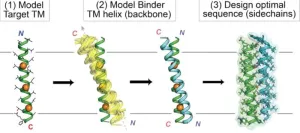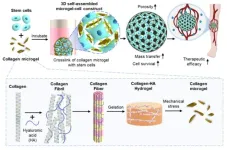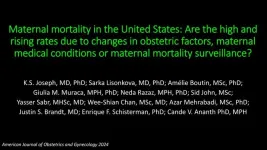A study led by the Barcelona Institute for Global Health (ISGlobal), a centre supported by the "la Caixa" Foundation, and the Barcelona Supercomputing Center - Centro Nacional de Supercomputación (BSC-CNS), has consistently estimated daily ambient concentrations of PM2.5, PM10, NO2 and O3 across a large ensemble of European regions between 2003 and 2019 based on machine learning techniques. The aim was to assess the occurrence of days exceeding the 2021 guidelines of the World Health Organization (WHO) for one or multiple pollutants, referred to as “unclean air days”.
The research team analysed pollution levels in more than 1,400 regions in 35 European countries, representing 543 million people. The results, published in Nature Communications, show that overall suspended particulate matter (PM2.5 and PM10) and nitrogen dioxide (NO2) levels have decreased in most parts of Europe. In particular, PM10 levels decreased the most over the study period, followed by NO2 and PM2.5, with annual decreases of 2.72%, 2.45% and 1.72% respectively. In contrast, O3 levels increased annually by 0.58% in southern Europe, leading to a nearly fourfold rise in unclean air days.
The study also looked at the number of days on which the limits for two or more pollutants were exceeded simultaneously, a confluence known as a “compound unclean air day”. Despite the overall improvements, 86.3% of the European population still experienced at least one compound unclean day per year during the study period, with PM2.5-NO2 and PM2.5-O3 emerging as the most common compound combinations.
The results highlight the significant improvements in air quality in Europe followed by the decline of PM10 and NO2, while PM2.5 and O3 levels continue to exceed WHO guidelines in many regions, resulting in a higher number of people exposed to unclean air levels. "Targeted efforts are needed to address PM2.5 and O3 levels and associated compound unclean days, especially in the context of rapidly increasing threats from climate change in Europe," says Zhao-Yue Chen, ISGlobal researcher and lead author of the study.
"Our consistent estimation of population exposure to compound air pollution events provides a solid basis for future research and policy development to address air quality management and public health concerns across Europe," points out Carlos Pérez García-Pando, ICREA and AXA Research Professor at the BSC-CNS.
Heterogeneous geographical distribution
The research team has developed machine learning models to estimate high-resolution daily concentrations of major air pollutants like PM2.5, PM10, NO2 and O3. This data-driven approach creates a comprehensive daily air quality picture for the European continent, going beyond sparsely distributed monitoring stations. The models gather data from multiple sources, including satellite-based aerosol estimates, existing atmospheric and climate data, and land use information. By analysing these air pollution estimates, the team calculated the annual average number of days in which the WHO daily limit for one or more air pollutants is exceeded.
Despite air quality improvements, 98.10%, 80.15% and 86.34% of the European population lives in areas exceeding the WHO recommended annual levels for PM2.5, PM10 and NO2, respectively. These results closely match the European Environment Agency (EEA)'s estimates for 27 EU countries using data from urban stations only. Additionally, no country met the ozone (O3) annual standard during the peak season from 2003 to 2019. Looking at short-term exposure, over 90.16% and 82.55% of the European population lived in areas with at least 4 days exceeding WHO daily guidelines for PM2.5 and O3 in 2019, while the numbers for NO2 and PM10 were 55.05% and 26.25%.
During the study period, PM2.5 and PM10 levels were highest in northern Italy and eastern Europe, while PM10 levels were highest in southern Europe. High NO2 levels were mainly observed in northern Italy and in some areas of western Europe, such as in the south of the United Kingdom, Belgium and the Netherlands. Similarly, O3 increased by 0.58% in southern Europe, while it decreased or showed a non-significant trend in the rest of the continent. On the other hand, the most significant reductions in PM2.5 and PM10 were observed in central Europe, while for NO2 they were found in mostly urban areas of western Europe.
The complex management of ozone
The average exposure time and population exposed to unclean air concentrations of PM2.5 and O3 is much higher than for the other two pollutants. According to the research team, this highlights the urgency of greater control for these pollutants and the importance of addressing the increasing trend and impact of O3 exposure.
Ground-level or tropospheric O3 is found in the lower layers of the atmosphere and is considered a secondary pollutant because it is not emitted directly into the atmosphere, but is formed from certain precursors - such as volatile organic compounds (VOCs), carbon monoxide (CO) and nitrogen oxides (NOx) - that are produced in combustion processes, mainly in transport and industry. In high concentrations, ozone can damage human health, vegetation and ecosystems.
"Ozone management presents a complex challenge due to its secondary formation pathway. Conventional air pollution control strategies, which focus on reducing primary pollutant emissions, may not be sufficient to effectively mitigate O3 exceedances and associated compound unclean days," says Joan Ballester Claramunt, ISGlobal researcher and senior author of the study. However, addressing climate change, which influences ozone formation through increased sunlight and rising temperatures, is crucial for long-term ozone management and protection of public health," he adds.
The challenge of compound episodes
Despite improvements in air pollution, the research team reported that over 86% of Europeans experienced at least one day with compound air pollution events each year between 2012 and 2019, where multiple pollutants exceeded WHO limits simultaneously. Among those compound days, the contribution of PM2.5-O3 compound days increased from 4.43% in 2004 to 35.23% in 2019, becoming the second most common type in Europe, indicating a worrying trend. They mainly occur in lower latitudes during warm seasons and are likely linked to climate change and the complex interplay between PM2.5 and O3.
Warmer temperatures and stronger sunlight in summer boost O3 formation through chemical reactions. Subsequently, higher levels of O3 will accelerate the oxidation of organic compounds in the air. This oxidation process leads to the condensation of certain oxidized compounds, forming new PM2.5 particles. Additionally, climate change increases the likelihood of wildfires, which further elevate both O3 and PM2.5 levels. “This complex interplay creates a harmful loop, highlighting the urgent need to address climate change and air pollution simultaneously,” explains Ballester Claramunt.
Reference
Main study: Chen, Z.Y., Petetin, H., Turrubiates, R.F.M., Achebak, H., García-Pando, C.P. and Ballester, J., 2024. Population exposure to multiple air pollutants and its compound episodes in Europe, Nature Communications. Doi: 10.1038/s41467-024-46103-3
Related study: Chen, Z.Y., Turrubiates, R.F.M., Petetin, H., Lacima, A., García-Pando, C.P. and Ballester, J., 2024. Estimation of pan-European, daily total, fine-mode and coarse-mode Aerosol Optical Depth at 0.1° resolution to facilitate air quality assessments. Science of The Total Environment, p.170593. Doi: 10.1016/j.scitotenv.2024.170593
END




